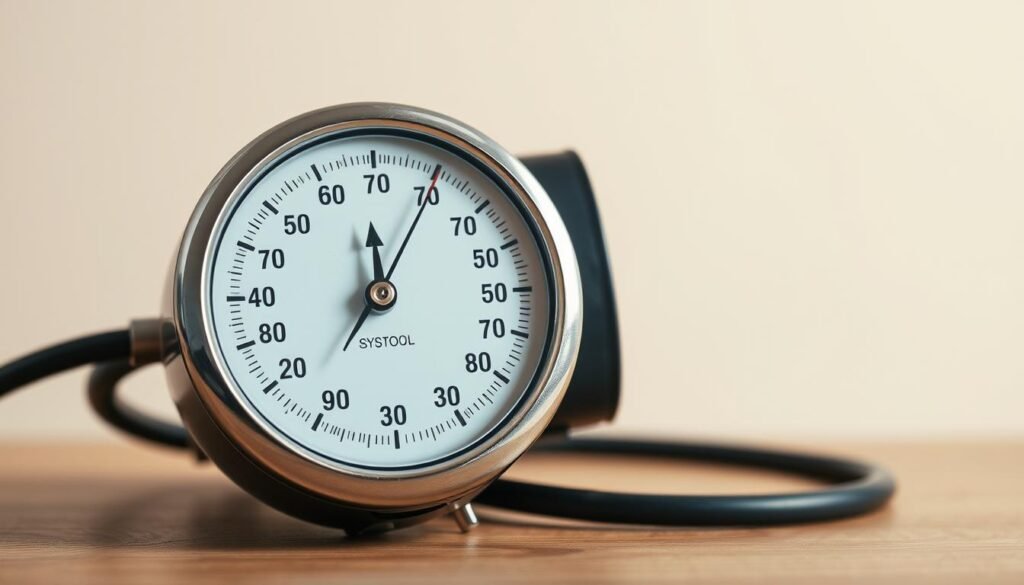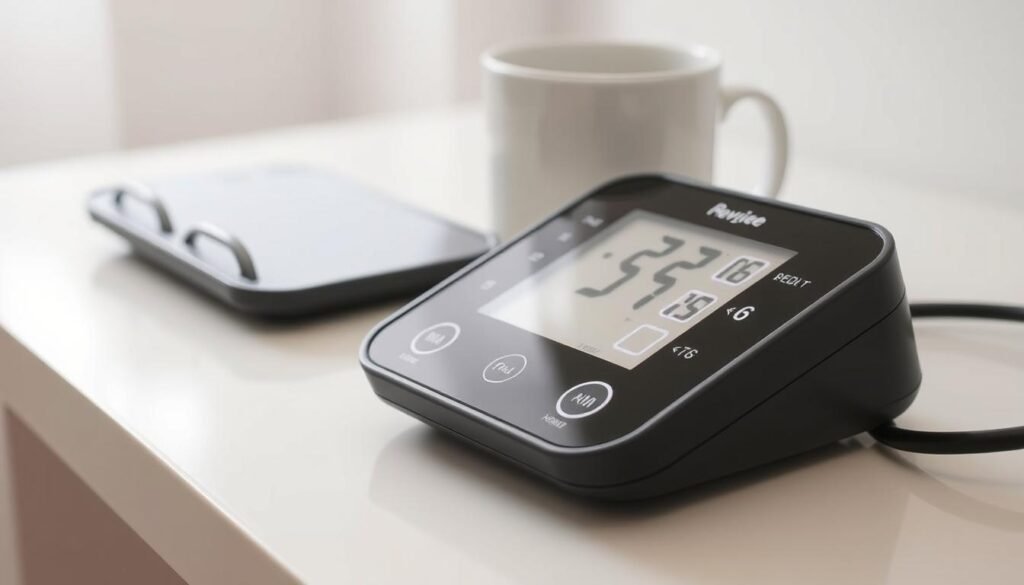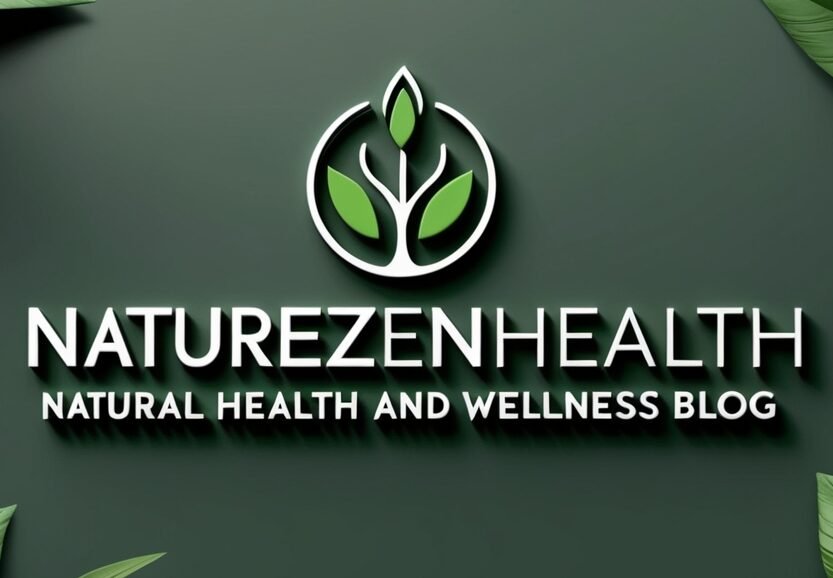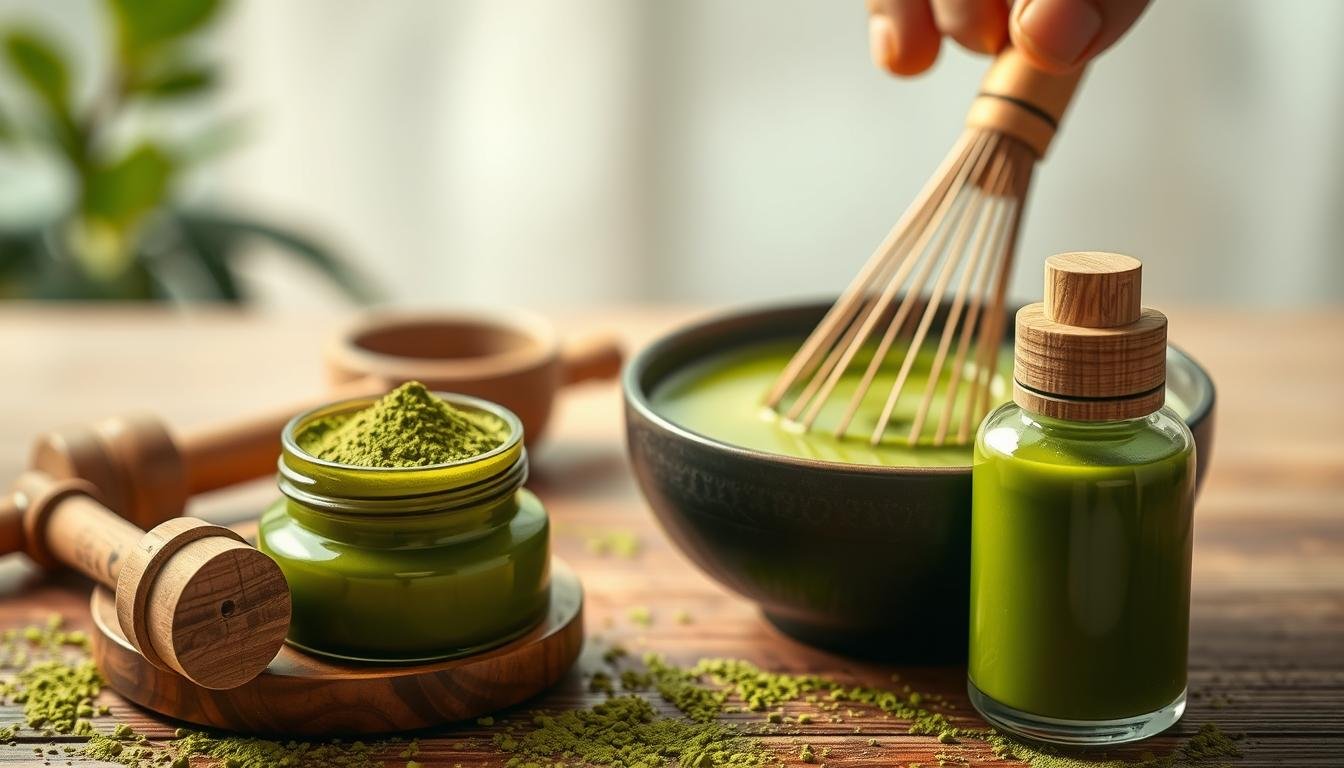Do you know the hidden dangers to your health? Hypertension is a serious condition that can cause severe health problems if not treated. It’s often called a “silent killer,” showing no clear symptoms until it’s too late.
But, there are signs you should watch out for to prevent problems. Knowing these important signs and how to handle high blood pressure is key to staying healthy.
Spotting the top warning signs can save your life. In this article, we’ll look at the top 3 signs you shouldn’t ignore.
Key Takeaways
- Understanding the risks associated with hypertension
- Identifying the top 3 warning signs of high blood pressure
- Learning preventive measures to manage hypertension
- Recognizing the importance of early detection
- Taking control of your health through awareness
Understanding High Blood Pressure and Hypertension
It’s key to understand hypertension for good heart health. High blood pressure, or hypertension, can cause serious health problems if not managed well.
What is High Blood Pressure?
High blood pressure happens when blood pressure is too high against artery walls. This can cause cardiovascular diseases like heart disease and stroke. It’s called a “silent killer” because it often has no symptoms.
The normal blood pressure is below 120/80 mmHg. If blood pressure is above this, it’s called hypertension.
Causes of Hypertension
Hypertension can come from many sources, like genes, lifestyle, and health conditions. Common causes include:
- Poor diet, especially high in sodium
- Lack of physical activity
- Too much alcohol
- Stress
- Existing kidney disease
Knowing these causes is key to preventing and managing hypertension.
Importance of Detection
Finding hypertension early is crucial because it often has no symptoms until it’s too late. Regular health checks can spot hypertension early, allowing for quick action.
The importance of detection is huge. Early detection can greatly improve health outcomes for those with hypertension. It lets them make lifestyle changes and, if needed, start medication to control their condition.
Common Symptoms of High Blood Pressure
It’s important to know the signs of high blood pressure early. This can help manage the condition better. Even though high blood pressure often doesn’t show symptoms, knowing what to look for is key.
Headaches and Dizziness
Headaches can be a sign of high blood pressure. This happens because of the extra pressure on blood vessels in the brain. Also, dizziness might occur because of poor blood flow, leading to feeling lightheaded or dizzy.
Blurry Vision
Blurry vision can also be a symptom of high blood pressure. It happens when blood vessels in the eyes get thicker or narrower. This can affect your vision. Getting your eyes checked regularly can spot any changes early.
Chest Pain
Chest pain, or angina, is a serious sign that needs quick medical help. It happens when the heart doesn’t get enough oxygen-rich blood. This is often because of high blood pressure.
Knowing about these symptoms—headaches, dizziness, blurry vision, and chest pain—can help spot high blood pressure early. This allows for quick action to manage the condition.
The Silent Nature of Hypertension
Hypertension is called a ‘silent killer’ because it often doesn’t show symptoms until it’s too late. This makes it very dangerous. People might not know they have it for years, leading to serious health problems.
Since hypertension doesn’t show symptoms, people might not find out they have it until it’s too late. This can lead to heart attacks or strokes. It’s important to get regular check-ups to catch it early.
Why It’s Often Asymptomatic
Hypertension is often silent because the body can adjust to the higher blood pressure without immediate signs. This can make people think they’re safe, even though the condition is getting worse.
The body’s ability to adapt and the slow development of hypertension explain why it’s often silent. So, people might not notice symptoms until it’s too late.
Risks of Ignoring Symptoms
Ignoring symptoms or not getting regular check-ups can be very risky. These risks include heart disease, stroke, and kidney disease, among others.
Ignoring hypertension symptoms can lead to more than just heart problems. Untreated hypertension can cause vision loss, kidney damage, and other serious issues. It’s crucial to know these risks to prevent them.
- Heart disease due to prolonged strain on the heart
- Stroke caused by damage to blood vessels in the brain
- Kidney disease resulting from damage to the kidneys’ blood vessels
Understanding hypertension’s silent nature and its risks helps people take action early. This can prevent serious health problems.
The Role of Diet in Managing High Blood Pressure
What we eat greatly affects our blood pressure. Choosing the right foods is key to managing high blood pressure. Foods rich in nutrients can lower blood pressure, while harmful foods can make it worse.
It’s important to make smart food choices. Knowing what to eat and why is crucial for managing blood pressure.
Foods to Include
Eating foods high in potassium, calcium, and fiber is beneficial. Foods like bananas and leafy greens help balance sodium levels. Dairy and fortified plant-based milk are good for heart health. Whole grains, fruits, and vegetables aid in digestion and blood pressure control.
A diet full of fruits and vegetables is essential. The DASH diet is a good example, focusing on these foods.
Foods to Avoid
It’s also important to avoid foods high in sodium, saturated fats, and cholesterol. High sodium can raise blood pressure. Foods like processed snacks and restaurant meals are high in sodium. Red meat and full-fat dairy products are high in saturated fats and cholesterol, harming heart health.
Lowering intake of these substances can help manage blood pressure. Reading labels and controlling portion sizes are good steps towards a healthier diet.
The Importance of Sodium Intake
Sodium intake is crucial for blood pressure. The American Heart Association suggests no more than 2,300 milligrams of sodium daily. For most adults, the goal is 1,500 milligrams. Too much sodium can lead to high blood pressure in some people.
To reduce sodium, use herbs and spices for flavor. Choose low-sodium options and be careful with processed foods, which are often high in sodium.
Lifestyle Changes to Consider
Changing your lifestyle is key to controlling high blood pressure. Making a few simple changes can greatly improve your heart health.
Regular Exercise
Regular physical activity is a top way to manage high blood pressure. Walking, jogging, cycling, or swimming can lower blood pressure and boost heart health. Aim for 30 minutes of moderate exercise most days.
Benefits of Regular Exercise:
- Lowers blood pressure
- Improves cardiovascular health
- Aids in weight management
- Reduces stress
Stress Management Techniques
Stress can raise blood pressure. Using stress management like meditation, deep breathing, or yoga can help. These practices reduce stress and improve overall well-being.
“Meditation is not about stopping thoughts, but about learning to observe them without judgment.”
Weight Management
Keeping a healthy weight is vital for managing high blood pressure. Extra weight strains the heart, raising blood pressure. A balanced diet and regular exercise help maintain a healthy weight.
| Lifestyle Change | Benefits |
|---|---|
| Regular Exercise | Lowers blood pressure, improves cardiovascular health, aids in weight management |
| Stress Management | Reduces stress, improves overall well-being |
| Weight Management | Reduces strain on the heart, helps manage high blood pressure |
The Importance of Regular Check-Ups
For those with high blood pressure, regular health check-ups are a must. They help keep an eye on the condition and adjust treatments as needed. Regular visits can also prevent serious health issues.
How Often Should You Get Checked?
How often you need a check-up depends on your age, health, and blood pressure level. Adults with normal blood pressure should get their blood pressure checked every two years. Those with high blood pressure might need to go more often, like every few months.
What to Expect During a Check-Up
At a check-up, doctors will use a sphygmomanometer to measure your blood pressure. They might also check your heart rate and lungs. Blood tests or ECGs could be done if needed.
Blood Pressure Measurement: It’s important to relax and sit comfortably when getting your blood pressure checked. This helps get an accurate reading.
Understanding Blood Pressure Readings
Blood pressure is measured in millimeters of mercury (mmHg). It’s shown as two numbers: systolic (top number) and diastolic (bottom number). Knowing these numbers is key to managing high blood pressure.
Normal blood pressure is below 120/80 mmHg. Elevated blood pressure is 120-129/80 mmHg. Hypertension stage 1 is 130-139/80-89 mmHg. Hypertension stage 2 is 140 or higher/90 or higher mmHg.
| Blood Pressure Category | Systolic (mmHg) | Diastolic (mmHg) |
|---|---|---|
| Normal | Less than 120 | Less than 80 |
| Elevated | 120-129 | Less than 80 |
| Hypertension Stage 1 | 130-139 | 80-89 |
| Hypertension Stage 2 | 140 or higher | 90 or higher |

Understanding blood pressure readings and going for regular check-ups helps manage high blood pressure. It lets you make smart health choices and avoid serious problems.
Medications for Managing High Blood Pressure
When lifestyle changes aren’t enough, medications become a necessary step in controlling hypertension. For many, managing high blood pressure means taking medications as part of their treatment plan.
Commonly Prescribed Medications
Several types of medications are commonly used to manage high blood pressure. These include:
- Diuretics, which help remove excess fluid from the body.
- ACE inhibitors, which relax blood vessels.
- Calcium channel blockers, which prevent calcium from entering the cells of the heart and blood vessel walls.
- Beta-blockers, which reduce the workload on the heart.
Each medication works differently to lower blood pressure. They are often used alone or together, based on individual needs.
Possible Side Effects
While medications can effectively manage high blood pressure, they can also have side effects. Common side effects vary by medication:
- Diuretics may cause increased urination and potassium loss.
- ACE inhibitors can cause a persistent cough in some individuals.
- Calcium channel blockers may lead to swelling in the feet and ankles.
- Beta-blockers can cause fatigue and cold hands and feet.
It’s important to understand these possible side effects. This helps manage them and adjust treatment plans as needed.
When to Talk to Your Doctor
It’s crucial to maintain open communication with your healthcare provider about any concerns or side effects. If side effects are severe or persistent, your doctor may need to adjust your medication or dosage.
Regular check-ups and monitoring help ensure your treatment plan is effective. They also make any necessary adjustments to manage your high blood pressure.
Home Monitoring for High Blood Pressure
Monitoring blood pressure at home is key to managing high blood pressure. It lets people take charge of their health by tracking their readings regularly. This proactive step can help manage blood pressure better and lower the risk of complications.
Choosing the Right Blood Pressure Monitor
Picking the right blood pressure monitor is crucial for accurate readings. There are many types, like digital and manual monitors. Digital monitors are easy to use and quick, while manual monitors need more skill but can be more precise if used right.
When picking a monitor, think about ease of use, cuff size, and storing past readings. It’s also important to check if the monitor is clinically validated for accuracy.
| Feature | Digital Monitor | Manual Monitor |
|---|---|---|
| Ease of Use | High | Low |
| Accuracy | High if Clinically Validated | High if Used Correctly |
| Cuff Size Options | Variety Available | Limited Options |
How to Accurately Take Your Blood Pressure
Getting accurate blood pressure readings is important. Sit comfortably with your back supported and arm at heart level. Avoid caffeine, smoking, and exercise for at least 30 minutes before.

- Rest for 5 minutes before taking a reading.
- Use the correct cuff size.
- Take multiple readings for accuracy.
Keeping a Blood Pressure Log
Keeping a blood pressure log is a great way to track changes. It helps your healthcare provider make better decisions about your treatment.
Record the date, time, and value of each reading. Also, note any factors that could affect your blood pressure, like stress or medication.
You can use a notebook, spreadsheet, or mobile apps to keep your log. Being consistent is important for its usefulness.
When to Seek Medical Attention
Knowing when to get medical help is key for people with high blood pressure. High blood pressure often doesn’t show symptoms until it’s severe. It’s important to know when you need medical help.
Signs that Require Immediate Attention
Some symptoms mean you should get medical care right away. These include:
- Severe headache: A sudden, severe headache can be a sign of a hypertensive crisis.
- Chest pain: Chest pain or discomfort can indicate heart-related issues associated with high blood pressure.
- Difficulty breathing: Shortness of breath or difficulty breathing can be a sign of heart failure or other serious conditions.
- Dizziness or fainting: Sudden dizziness or fainting spells can indicate a severe drop in blood pressure or other cardiovascular issues.
- Confusion or blurred vision: Sudden confusion or changes in vision can be indicative of a stroke or other neurological issues related to hypertension.
Differences Between Hypertension and Other Conditions
It’s important to tell the difference between hypertension symptoms and those of other conditions. For example, chest pain can be from hypertension or other heart issues. Knowing the difference can help avoid wrong diagnoses.
Some conditions that can be confused with hypertension or its symptoms include:
- Anxiety or panic attacks: Symptoms like rapid heartbeat and dizziness can be mistaken for hypertension.
- Dehydration: Dehydration can cause dizziness and low blood pressure, which might be confused with hypertension symptoms.
- Other cardiovascular diseases: Conditions like heart failure or coronary artery disease can present with similar symptoms.
Knowing these differences and when to seek medical attention can help get timely treatment. This is crucial for managing hypertension effectively.
Myths and Misconceptions About High Blood Pressure
It’s important to know the truth about common myths about high blood pressure. This condition, also known as hypertension, has many misconceptions. These can lead to bad management and higher risks of serious problems.
Debunking Common Myths
Many think high blood pressure only affects older people. But, younger individuals can also get it. This can happen due to genetics, being overweight, or certain lifestyle choices. Another myth is that you’ll always feel sick if you have high blood pressure. But, many people don’t show symptoms until it’s very bad.
Debunking these myths is key for early detection and treatment. Regular health checks can find hypertension, no matter your age or how you feel.
Understanding the Reality
In truth, high blood pressure is a silent killer. It can cause serious health problems like heart disease, stroke, and kidney disease if not managed. Knowing that it can be silent and affects anyone can encourage more people to check and manage their blood pressure.
By understanding high blood pressure, people can make better health choices. This includes changing what you eat, exercising, and managing stress. These are all important for controlling hypertension well.
Resources for Managing Hypertension
Managing high blood pressure well needs good resources. These should offer support, education, and guidance. Many organizations provide valuable info and community support for those with high blood pressure.
Support Groups and Organizations
Support groups, like those from the American Heart Association, are great. They let people share their experiences and learn from others. These groups have educational materials and expert advice too.
Educational Tools and Apps
Tools and apps like MyFitnessPal and Blood Pressure Log are helpful. They help track blood pressure and give tips for managing it. These tools let people monitor their condition closely and make better lifestyle choices.
Finding Reliable Information Online
Finding good info online is key to staying up-to-date. Trusted sources like the Centers for Disease Control and Prevention (CDC) and peer-reviewed journals are reliable. They offer trustworthy info on managing high blood pressure.



